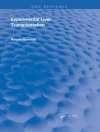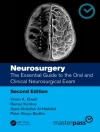This book presents up-to-date information on clinical and research applications of imaging in peripheral arterial disease (PAD). It provides high-quality images useful not only in the diagnosis of PAD but also for use in clinical trials aimed at the development of novel therapies such as angiogenic agents and stem cells. The book begins with coverage of the applications of the four major imaging modalities in a clinical setting: ultrasound, computed tomography angiography (CTA), magnetic resonance angiography (MRA), and digital subtraction angiography (DSA). It also discusses the ankle brachial index (ABI) as a screening technique to establish the presence of PAD. Subsequent chapters focus on the advantages and limitations of various research applications of imaging in PAD including contrast ultrasound for measuring perfusion; MRI for assessing perfusion, energetics, plaque volume, and characteristics; and radionuclide imaging for perfusion and inflammation. Imaging in Peripheral Arterial Disease: Clinical and Research Applications is an essential resource for physicians, researchers, residents, and fellows in cardiology, radiology, imaging, nuclear medicine, diagnostic radiology, and vascular surgery.
Tabla de materias
Part I. Clinical Application s.- Chapter 1. Imaging Needs of Clinicians Caring for PAD Patients.- Chapter 2. Role of the Ankle Brachial Index
Chapter 3. Duplex Ultrasound.- Chapter 4. Computed Tomography Angiography (CTA).- Chapter 5. Magnetic Resonance Angiography (MRA).- Chapter 6. Digital Subtraction Angiography.-
Part II. Research Applications .- Chapter 7. Imaging Needs for Novel Therapeutics in PAD
Chapter 8. Contrast Ultrasound.- Chapter 9. MR Perfusion and Spectroscopy.- Chapter 10. MR Plaque Imaging.- Chapter 11. Radionuclide Imaging.
Sobre el autor
Christopher M. Kramer, MD
Ruth C. Heede Professor of Cardiology
Professor of Radiology
Director,
University of Virginia Health System
Charlottesville, VA, 22908 USA












